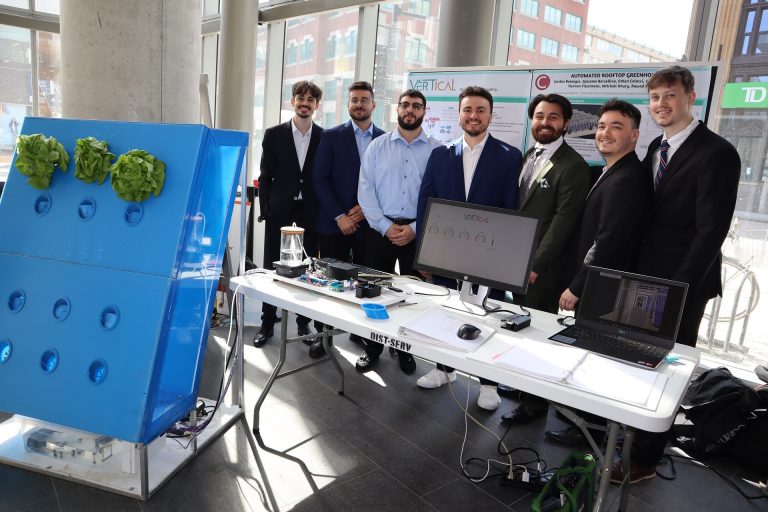Automated Greenhouse
3rd Tier Capstone SDG Impact Award Winner, 2024-2025
Project members
- Ethan Colacci
- Tiernan Fitzsimons
- Jordan Belanger
- Mitchell Khury
- Rawad Massaad
- Anthony Louis D’Amico
- Giacomo Borsellino
Related Sustainable Development Goals
- Goal 1: No poverty
- Goal 2: Zero hunger
- Goal 3: Good health and well-being
- Goal 6: Clean water and sanitation
- Goal 7: Affordable and clean energy
- Goal 8: Decent work and economic growth
- Goal 9: Industry, Innovation and Infrastructure
- Goal 11: Sustainable cities and communities
- Goal 12: Responsible consumption and production
- Goal 13: Climate action
- Goal 14: Life below water
- Goal 15: Life on land
- Goal 17: Partnership for the goals
About the project
Typical soil-based agriculture contributes to environmental issues such as water pollution, deforestation, emissions, and land degradation. Our team aims to address these challenges by designing an automated aeroponic greenhouse. These greenhouses are designed to be located on pre-existing buildings, particularly in urban areas.
Due to the aeroponic nature, our system reduces water usage significantly and eliminates fertilizer runoff. The rooftop location minimizes emissions caused by transportation and prevents any land degradation.
Our system uses multiple sensors, including pH, temperature, flow, water level, and turbidity sensors, to continuously monitor plant health. This highly controlled environment optimizes climate, light, and nutrient delivery. This way, we can ensure an abundant production throughout the year, even in harsh winter conditions.
Key stakeholders for this project include urban consumers and building owners seeking sustainable solutions. We plan to implement our greenhouse on top of existing structures such as Walmarts and various grocery stores, making use of unused rooftop space. This is possible due to our modular and scalable design. Our main competitors include Lufa Farms, AeroFarms, and other indoor agriculture companies.
By brining sustainable food production into the city, we aim to address food insecurity while keeping our environmental impact at a minimum. Our goal is to advance sustainable agriculture and integrate food production into urban infrastructure.


